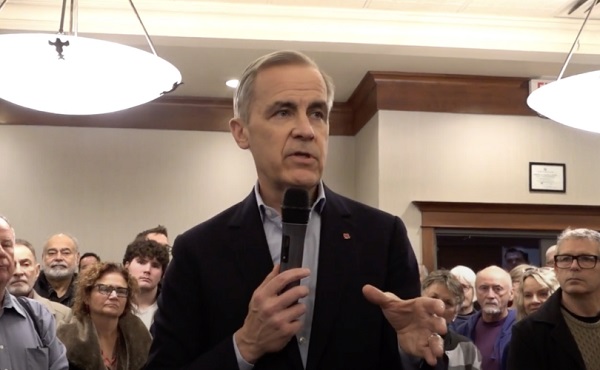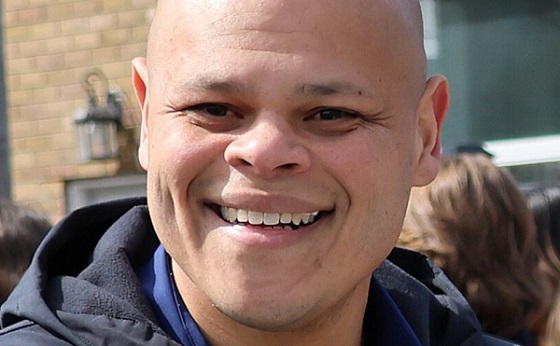National
Daughter of Canadian PM Mark Carney uses ‘they/them’ pronouns

From LifeSiteNews
Canadian Prime Minister Mark Carney has a daughter who identifies as “non-binary” and uses “they/them” pronouns.
The Daily Mail first reported these details on March 10:
Carney’s other daughter Sasha, 24, who graduated cum laude from Yale University with a degree in English and Gender Studies, uses they/them pronouns, according to their social media profiles. They previously went by the name Sophia. Sasha Carney, who currently works as a freelance writer and reviewer in Brooklyn, New York, has previously posted about their mental health struggles online.
Sasha’s Facebook profile, which was publicly accessible at time of publication, shows that she self-identified as “non-binary” in 2018:

Many of Carney’s publicly stated views are avowedly leftist; one of her profile pictures identifies her as a supporter of socialist Bernie Sanders. In 2019, she made a Facebook post stating that “Yale is an institution which has promoted and legitimized eugenics, global warfare, genocidal policies, the racialized carceral state, and the hyper-privileging of white voices in academia. In the face of this, it is crucial that we invest time, energy, thought, resources, and love into ethnicity, race, and migration studies, which looks at the world, and Yale itself, through a critical anti-racist and anticolonial lens.”
Juno News, formerly known as True North, broke additional details earlier today, publishing excerpts of an essay written by Sasha Carney in an alternative magazine called Authenticity in April 2020 titled Mumsnet, and Transmasculine Childhood. As reporters Cosmin Dzurdzsa and Alex Zoltan noted, the essay reveals that “Mark Carney sent [his] daughter to [the] discredited U.K. Tavistock Transgender Clinic.” The published excerpt reads:
In 2013, shortly after I chopped off all my hair into a deeply regrettable floppy Justin Bieber cut, I moved to London, the land of Enid Blyton murder mysteries. A block from my new house was the Tavistock & Portman NHS Foundation Trust, an imposing grey building which contained the country’s only child and adolescent ‘gender identity clinic.’
I watched as my friend, after a year of weekly appointments trying desperately to get an official diagnosis of gender dysphoria, was denied the diagnosis, and with it any hope of top surgery because they sometimes wore skirts. I watched organisations with names like ‘Transgender Trend’ refer to trans Tavistock patients as ‘experimental subjects’ who didn’t know what was best for them. I watched as my school’s former principal told a national news outlet that trans students like me and many of my close friends were cis women who were only coming out to ’cause turbulence’ and ‘adhere to anything a bit radical.’ I watched all this happen, and I quietly stopped wearing underwire bras, and wore baggier clothes, and I felt a fierce surge of jealousy every time I walked into the Tavistock for therapy and saw patients turn left, towards the medical spaces I didn’t feel ‘trans enough’ to enter.
The essay has since been scrubbed from the internet.
In 2022, it was announced that Tavistock was being shut down, with over 1,000 families expected to join a massive lawsuit over the damage done to their children due to the “treatment” they received at the gender clinic. Last year, the U.K. National Health Service announced that it would stop prescribing puberty blockers to minors entirely. Juno News also reported that Sasha has expressed her support, in writing, for “puberty blockers” for children.
It is difficult to overstate the potential political impact of this story. Last year, Danielle Smith’s government in Alberta banned sex change surgeries and puberty blockers for minors; in a press conference in February 2024, Smith specifically cited the Tavistock clinic as a motivation behind her legislation.
“We have been tracking what’s been happening internationally – in Great Britain with the Tavistock Clinic, in Finland, in Norway, in Sweden – and we’ve seen that there has been a substantial change in the approach to dealing with these issues,” Smith observed.
The fact that the prime minister’s daughter went to Tavistock clinic is certainly an indication of his views on such legislation, and an indication that his commitment to the transgender agenda will likely be every bit as fervent as his predecessor’s.
Business
Looks like the Liberals don’t support their own Pipeline MOU

From Pierre Poilievre
Alberta
They never wanted a pipeline! – Deputy Conservative Leader Melissa Lantsman

From Melissa Lantsman
Turns out the anti-development wing of the Liberal Party never stopped running the show.
Today, we’ll see if the Liberals vote for the pipeline they just finished bragging about.
Spoiler: they won’t. Because with the Liberals, the announcements are real, but the results never are.
-

 Business1 day ago
Business1 day agoThe EU Insists Its X Fine Isn’t About Censorship. Here’s Why It Is.
-

 Focal Points2 days ago
Focal Points2 days agoCommon Vaccines Linked to 38-50% Increased Risk of Dementia and Alzheimer’s
-

 National8 hours ago
National8 hours agoLiberal bill “targets Christians” by removing religious exemption in hate-speech law
-

 Business1 day ago
Business1 day agoCanada invests $34 million in Chinese drones now considered to be ‘high security risks’
-

 Health1 day ago
Health1 day agoCDC Vaccine Panel Votes to End Universal Hep B Vaccine for Newborns
-

 Economy1 day ago
Economy1 day agoAffordable housing out of reach everywhere in Canada
-

 Bruce Dowbiggin1 day ago
Bruce Dowbiggin1 day agoWayne Gretzky’s Terrible, Awful Week.. And Soccer/ Football.
-

 Health17 hours ago
Health17 hours agoThe Data That Doesn’t Exist





